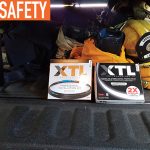Telematics has proven to be a game changer for fleet-based businesses, enabling the ready exchange of information between vehicles and a central manager. But while awareness of its benefits has significantly increased recently, telematics is no longer considered revolutionary.
Simply put, the data telematics technology generates and the means to understand it have been available for more than a decade. And, as businesses become increasingly aware of the benefits of telematics, many are turning to Mobile Resource Management (MRM), which threatens to push traditional telematics into the slow lane.
TRADITIONAL FALLING BEHIND
Telematics data is typically created using GPS units with on-board computers, whether it’s on a service truck driving through remote Marfa, Texas, or a delivery van in Nebraska’s Sand Hills. The hardware uses cellular networks to transfer real-time data to the cloud, which then can be analyzed for more-effective fleet management. The data covers everything from location and movement to vehicle status and driver behavior.
The headline benefits of telematics include vast fuel savings through route optimization and increased driver and vehicle safety. Managers get a bird’s-eye view of an entire field operation, checking the overall health, profitability, and productivity of the fleet, while ensuring the workforce is operating the vehicles safely.
But the times they are indeed changing. Fleet managers and those in the field now have the power to understand the mobility of an entire workforce. While telematics is of significant benefit to any fleet-based business, there is much more to a mobile workforce than simply understanding the location and speed of the vehicle, and what the driver does inside it.
MRM PULLING AHEAD
Almost everyone has a smartphone in their pocket—Pew Research puts the figure at 77 percent of Americans. This means that devices, workers, and assets are mobile and connected in an extremely powerful way—a far cry from the simple GPS link that old telematics hardware uses.
On top of that, more organizations are becoming experienced at using technologies such as cloud and big data to harness insights from this mobility. Research from Gartner predicts that the worldwide public cloud services market will grow 18 percent this year to $24.8B, up from $209.2B in 2016. These two technologies, plus the power and mobility of the smartphone, are giving unparalleled insight to fleet owners.
Fortunately, this is where MRM comes in.
MRM is the technology that allows all constituents of a fleet to communicate and interact with data, while gaining insight from it in real time. Fleet owners can optimize their operations by using mobile and the cloud to connect their businesses from the front line to the back end.
This includes traditional telematics information, but also planning, navigation, routing, and compliance data. Because this technology is smartphone-based, iOS and Android capabilities further open up possibilities for businesses.
An app can be created to solve almost any demand within a fleet operation. One example is the development of gamification apps that introduce friendly competition around fuel-efficient driving, and encourage safer driving. These MRM capabilities help make businesses more efficient, smarter, and safer in a way that simple telematics can’t do on its own.
MOVING FORWARD
Regardless of the industry, fleet owners are under immense pressure to improve cost efficiency, while also keeping up with rapidly changing customer and employee demands. Telematics can help lower operating costs, and is a first step in using technology to transform a business. But in order to stay at the forefront, and optimize all aspects of a mobile organization, fleet-based businesses must think beyond just telematics, and embrace full mobility with MRM.
ABOUT THE AUTHOR:
Kelly Frey is vice president of product marketing at Verizon Telematics Inc. For more information, visit www.verizontelematics.com.
_______________________________________________________________________
MODERN WORKTRUCK SOLUTIONS: SEPTEMBER 2017 ISSUE
Did you enjoy this article?
Subscribe to the FREE Digital Edition of Modern WorkTruck Solutions magazine.
![]()




